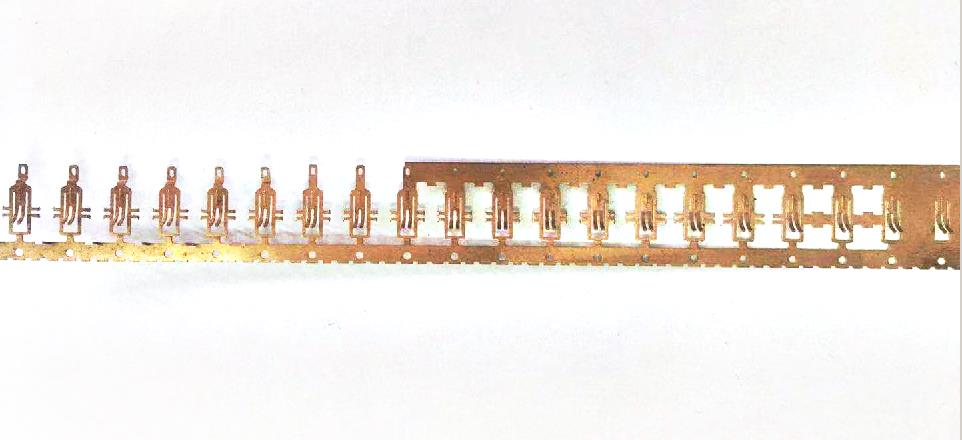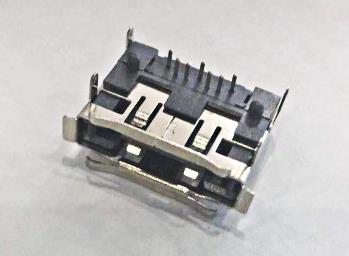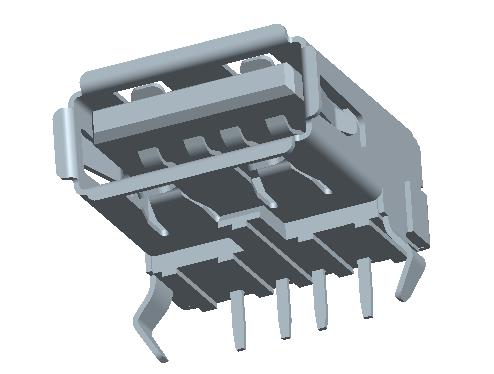FOCUSES ON PLASTIC INJECTION AND MOLD DESIGN.

DONGGUAN LONGKE ELECTRONIC TECHNOLOGY CO., LTD.
Focus on R & D, production and marketing of precision connectors, electronic connecting lines, metal stamping, mold design
Enterprise mailbox
sales@longke-china.com
NEWS
FOCUSED ON CONNECTOR
主页 > Home > News > Knowledge Encyclopedia >
Knowledge Encyclopedia
Specification of SATA 2.6 and 3.0
- Release date:19-10-23 10:11
- Clicks:157
The change of the standard of SATA
In fact, the most common name of the SATA II is the name of a committee. The purpose of the committee is to formulate the earliest standard of the SATA 1. X. later, the organization changed its name to the international organization of the SATA (sata-io). However, the name of the SATA II was saved. Because the related products from different manufacturers have different functions or support degrees, the naming rules of each product of the SATA are all different. There are differences.
Because the naming rules and functional requirements are not specified in the sata-io, there are many problems in product positioning in the early stage of promotion. In general, manufacturers usually use specific functions as the naming rules, and the most common names are mostly the maximum transmission speed, common names such as the SATA 300, the SATA 3gb / s and the SATA 3G. Some of them also directly use the SATA II as the supporting specification name, and then the production. The hardware specifications of the products are quite complete, so most of them abandon the past speed naming rules. In addition, in the autumn IDF exhibition at the end of August 2005, sata-io integrated the past contents of SATA II recognized by various manufacturers, such as 3gbps, local command queue (NCQ), port multipliers and port selectors, etc., into the same standard specification of SATA 2.5, greatly In the first quarter of 2007, sata-io released version 2.6 specification, and a further version 3.0 specification will be launched in the second half of 2007.
The upper hand of the SATA interface still has to face the objective reality
The emergence of SATA 1.0 represents the computer industry's official shift from low-time pulse parallel transmission to high-time pulse sequence transmission. The initial specification is set at 1.5gbps, which obviously has a more abundant transmission energy than the past IDE interface. However, although it provides such a wide bus, the speed of the hard disk machine is very slow, and the speed and disk density are not fast enough, which makes the significance of the speed improvement of the SATA bus. It's not big.
What's more about the specification of SATA version 2.6
The technology added in version 2.6 of SATA is mainly for small embedded storage or mobile application, which includes the following:
1. You can install the SATA optical drive into the built-in daughter card cables and connectors in small devices (such as small form factor).
2. The 1.8-inch hard disk can be installed to the small-sized terminal real micro SATA connector such as UMPC.
3. Since we have the specification of micro connector, we should also design the built-in or external multi-channel cable and connector for this kind of micro connector.
4. NCQ priority is strengthened, which can dynamically assign priority level to data transmission in complex loading environment and avoid traffic jam.
5. It can allow laptops to close or not use NCQ function, so as to avoid dragging system performance in case of incomplete driver.
Figure below: the miniaturized connection interface developed by SATA 2.6. (sata-io)
SATA version 2.6 enhanced for mobile applications
As can be seen from the above strengthening points, version 2.6 of SATA is mainly aimed at smaller applications, such as the internal and external specifications of samll form factor or UMPC. However, for such applications, the number of storage devices is limited, and the speed of the storage device itself will be affected by different factors such as rotation speed (for example, the maximum transmission speed of 1.8-inch hard disk commonly used in UMPC is no more than 20mbyte /It seems that it's not necessary to import the traditional 3.5-inch hard disk. UMPC itself can't have the support ability of disk array. The only application way that can exert the power of SATA is to connect multiple external storage devices with port share.
The disadvantages of traditional mechanical hard disk are obvious in UMPC, not only the power consumption is large, the speed is slow, and the capacity growth speed is not fast, so the sudden emergence of solid-state disk (SSD) may become the power of promoting the bandwidth of SATA. However, from another perspective, it is also possible to build an express card interface on UMPC, compared with the SATA, in terms of the expansion of the specification, speed performance and connection mode of express card, In the next two or three years, the price and capacity of SSD will still not be accepted by the general consumers, and the traditional micro hard disk still has its living space, so the competition between SATA and express card in this respect is still uncertain.
Next phase of SATA 3.0
The biggest improvement of SATA 3.0 is to increase the maximum transmission bandwidth of the bus to the spectrum of 6gbps, which greatly improves the application space of the port sharer and connector, and can play its advantages in the external application with the demand for large capacity and high-speed transmission. The connection test with better durability is also in progress, but the specific content is not clear up to now. However, in terms of its huge bandwidth, it has gone beyond the scope of general consumer applications, and it focuses on specific professional applications, and the market is much smaller.
The mechanical hard disk will continue to exist for a long time in the future, and the growth of its transmission speed will also maintain the current range. Therefore, hardware manufacturers need to develop more different connection methods to effectively consume these huge bandwidth, so that consumers can feel the benefits of digital increase more directly, rather than focusing on the propaganda of written specifications. The method brings benefits to users in related applications.
Problems and solutions in the application of SATA hard disk and ghost
I think a lot of friends here can do system backup using ghost, but there are also many friends, especially those who use SATA hard disk, who may encounter such situations when using ghost to backup the system. After starting the system with floppy disk or CD, when using ghost.exe command, the system will be black screen and die.
In fact, the most common name of the SATA II is the name of a committee. The purpose of the committee is to formulate the earliest standard of the SATA 1. X. later, the organization changed its name to the international organization of the SATA (sata-io). However, the name of the SATA II was saved. Because the related products from different manufacturers have different functions or support degrees, the naming rules of each product of the SATA are all different. There are differences.
Because the naming rules and functional requirements are not specified in the sata-io, there are many problems in product positioning in the early stage of promotion. In general, manufacturers usually use specific functions as the naming rules, and the most common names are mostly the maximum transmission speed, common names such as the SATA 300, the SATA 3gb / s and the SATA 3G. Some of them also directly use the SATA II as the supporting specification name, and then the production. The hardware specifications of the products are quite complete, so most of them abandon the past speed naming rules. In addition, in the autumn IDF exhibition at the end of August 2005, sata-io integrated the past contents of SATA II recognized by various manufacturers, such as 3gbps, local command queue (NCQ), port multipliers and port selectors, etc., into the same standard specification of SATA 2.5, greatly In the first quarter of 2007, sata-io released version 2.6 specification, and a further version 3.0 specification will be launched in the second half of 2007.
The upper hand of the SATA interface still has to face the objective reality
The emergence of SATA 1.0 represents the computer industry's official shift from low-time pulse parallel transmission to high-time pulse sequence transmission. The initial specification is set at 1.5gbps, which obviously has a more abundant transmission energy than the past IDE interface. However, although it provides such a wide bus, the speed of the hard disk machine is very slow, and the speed and disk density are not fast enough, which makes the significance of the speed improvement of the SATA bus. It's not big.
What's more about the specification of SATA version 2.6
The technology added in version 2.6 of SATA is mainly for small embedded storage or mobile application, which includes the following:
1. You can install the SATA optical drive into the built-in daughter card cables and connectors in small devices (such as small form factor).
2. The 1.8-inch hard disk can be installed to the small-sized terminal real micro SATA connector such as UMPC.
3. Since we have the specification of micro connector, we should also design the built-in or external multi-channel cable and connector for this kind of micro connector.
4. NCQ priority is strengthened, which can dynamically assign priority level to data transmission in complex loading environment and avoid traffic jam.
5. It can allow laptops to close or not use NCQ function, so as to avoid dragging system performance in case of incomplete driver.
Figure below: the miniaturized connection interface developed by SATA 2.6. (sata-io)
SATA version 2.6 enhanced for mobile applications
As can be seen from the above strengthening points, version 2.6 of SATA is mainly aimed at smaller applications, such as the internal and external specifications of samll form factor or UMPC. However, for such applications, the number of storage devices is limited, and the speed of the storage device itself will be affected by different factors such as rotation speed (for example, the maximum transmission speed of 1.8-inch hard disk commonly used in UMPC is no more than 20mbyte /It seems that it's not necessary to import the traditional 3.5-inch hard disk. UMPC itself can't have the support ability of disk array. The only application way that can exert the power of SATA is to connect multiple external storage devices with port share.
The disadvantages of traditional mechanical hard disk are obvious in UMPC, not only the power consumption is large, the speed is slow, and the capacity growth speed is not fast, so the sudden emergence of solid-state disk (SSD) may become the power of promoting the bandwidth of SATA. However, from another perspective, it is also possible to build an express card interface on UMPC, compared with the SATA, in terms of the expansion of the specification, speed performance and connection mode of express card, In the next two or three years, the price and capacity of SSD will still not be accepted by the general consumers, and the traditional micro hard disk still has its living space, so the competition between SATA and express card in this respect is still uncertain.
Next phase of SATA 3.0
The biggest improvement of SATA 3.0 is to increase the maximum transmission bandwidth of the bus to the spectrum of 6gbps, which greatly improves the application space of the port sharer and connector, and can play its advantages in the external application with the demand for large capacity and high-speed transmission. The connection test with better durability is also in progress, but the specific content is not clear up to now. However, in terms of its huge bandwidth, it has gone beyond the scope of general consumer applications, and it focuses on specific professional applications, and the market is much smaller.
The mechanical hard disk will continue to exist for a long time in the future, and the growth of its transmission speed will also maintain the current range. Therefore, hardware manufacturers need to develop more different connection methods to effectively consume these huge bandwidth, so that consumers can feel the benefits of digital increase more directly, rather than focusing on the propaganda of written specifications. The method brings benefits to users in related applications.
Problems and solutions in the application of SATA hard disk and ghost
I think a lot of friends here can do system backup using ghost, but there are also many friends, especially those who use SATA hard disk, who may encounter such situations when using ghost to backup the system. After starting the system with floppy disk or CD, when using ghost.exe command, the system will be black screen and die.
- 【Printing】
- 【Collection】
- 【Return】
相关产品RELATED PRODUCTS
Address: No.28, southwest Lang Road, Henan Industrial Zone, Jinxia, Chang'an Town, Dongguan City, Guangdong Province



